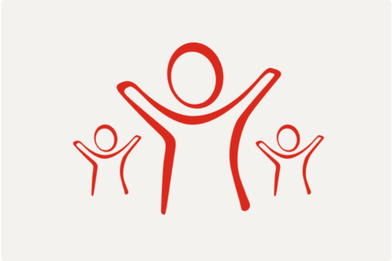Indonesia earthquake disease homeless children
CIANJUR, Indonesia, 5 December 2022 – Nearly 115,000 people, including about 38,450 children, remain homeless after a deadly earthquake struck Indonesia’s main island of Java two weeks ago and face a “ticking time bomb” of disease and infection, Save the Children warned today.
The earthquake in the Cianjur region on 21 November killed at least 334 people, including more than 100 children with 31 children dying in one classroom after the roof collapsed, according to Indonesia’s Education Office.
We stand side by side with children in the world's toughest places.
Survivors are now crammed into tents housing hundreds of people, Save the Children said, with little access to adequate toilets or clean water. Heavy rains and aftershocks have created swamp-like conditions that are ripe for the spread of disease and infection.
According to recent data, there are thousands of cases of respiratory infections, and nearly 800 cases of diarrhoea[i] – one of the biggest causes of death in children worldwide.
Save the Children is calling for more aid to be delivered as a matter of urgency to the region after the earthquake and aftershocks damaged nearly 40,000 houses and more than 500 schools, leaving more than 115,000 people displaced.
Arum*, 50, lived with her husband, two children and two grandchildren before their home was destroyed in the earthquake. She said:
“My house and all the neighbouring houses collapsed, and my grandchild was having seizures because of the stress of what was happening.
“We’ve lost everything. Now our home is gone, we are living in tents with hundreds of other people. My husband no longer has a job, and his diabetes means he is vulnerable to illness. We don’t have any insurance. I am not sure how we will be able to rebuild my grandchildren’s lives, and I am afraid for their mental wellbeing.”
Aid agencies are racing to get aid to families who have lost everything in the disaster, but Save the Children said aid efforts were being hampered by an influx of so called ‘disaster tourists’ who had driven to Cianjur to witness the destruction and were blocking roads.
Save the Children Indonesia’s Response Team Leader, Fadli Usman, said:
“Hundreds of thousands of people have lost their homes and are now forced to live in conditions that are a ticking time bomb of disease and infection. They desperately need life-saving aid as quickly as possible but many of the worst-hit families live in remote areas which are already difficult to reach by road.
“We are now facing further delays because roads are blocked by people travelling to Cianjur to see the devastation. Some of them are even stopping traffic to take photos. I want those people to know that they’re literally stopping aid from getting to those in need, including children whose lives are on the line.
“As well as access, we also desperately need more funds to help meet the immediate needs of children and families including clean water, blankets, tents, emotional support, and educational supplies so that children can carry on as best they can.”
Save the Children is supporting earthquake-hit families by distributing more tents, clean water, hygiene, and shelter kits to displaced families and providing psychosocial support to children left terrified by the 5 .6 magnitude earthquake and aftershocks. It is also running child friendly spaces with toys and other activities for children in five locations around Cianjur.
Save the Children has been operating in Indonesia since 1976 and works in 19 of 38 provinces on humanitarian responses and programmes linked to education, health and nutrition, child protection and poverty.
ENDS
*name has been changed to protect anonymity


.jpg-ch11029386.jpg/s56883b4bl3fg73wk7l823i0m5773g5j.jpg?g=top&w=392&h=261&format=webp&itok=ZTvODiIo)

